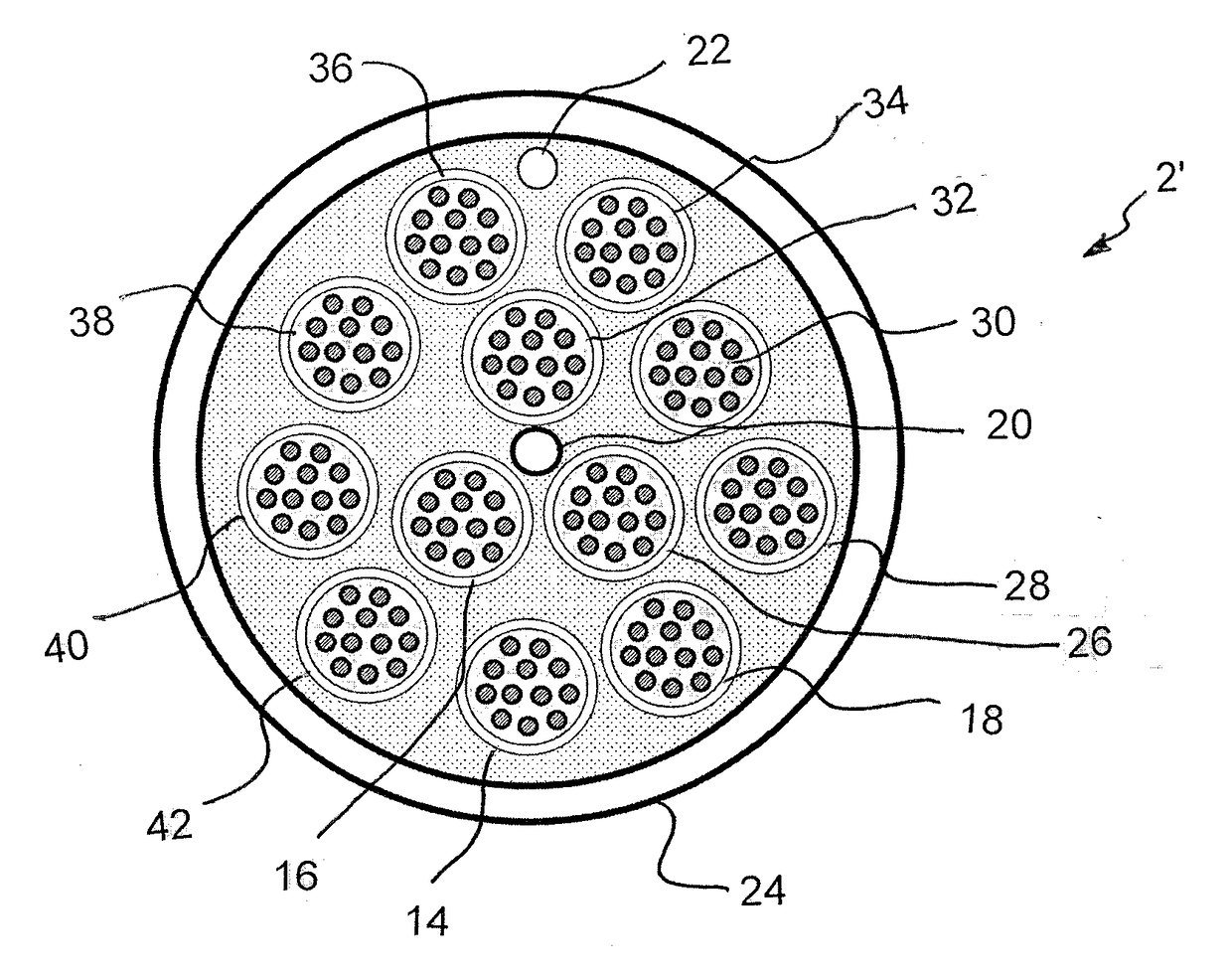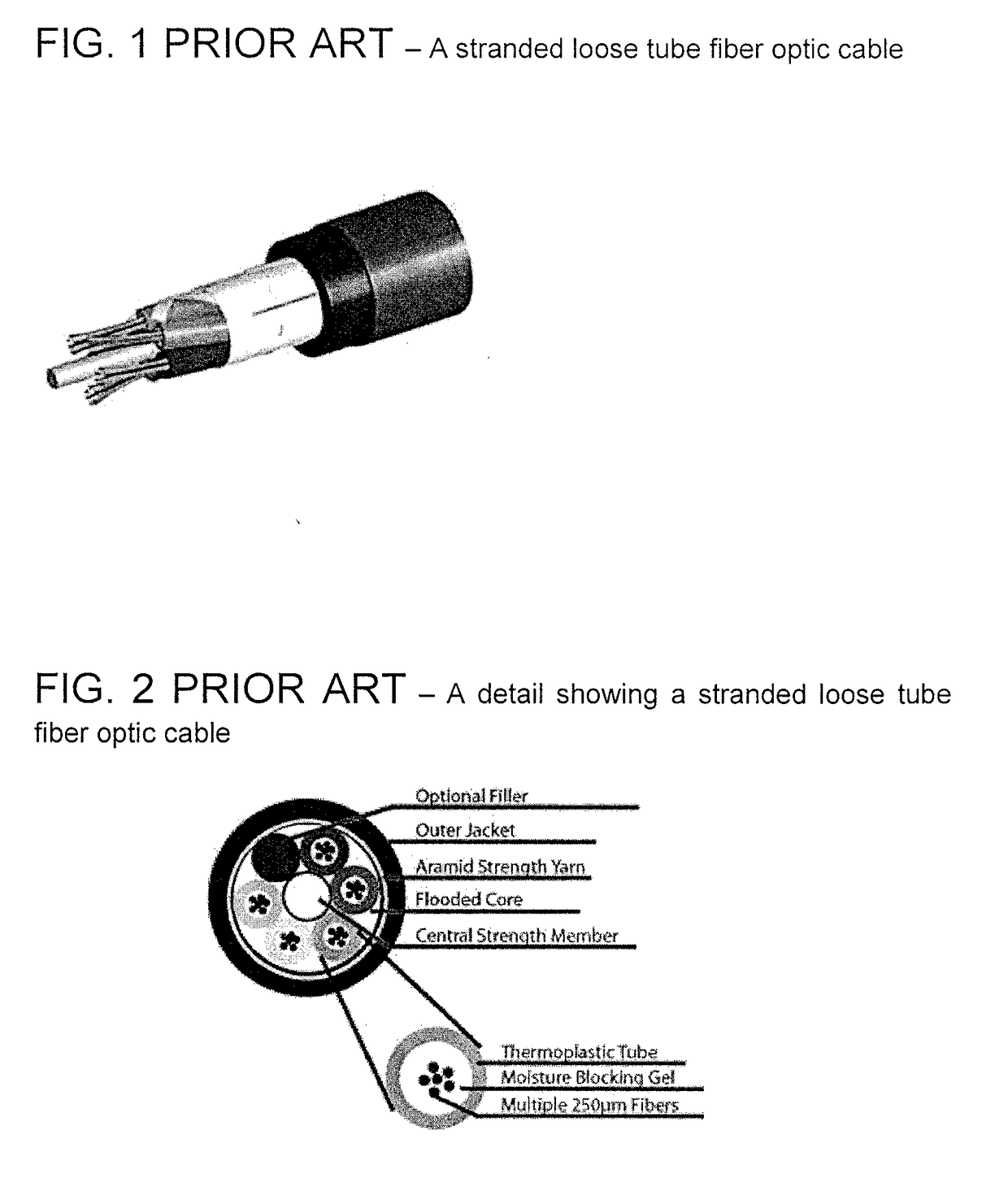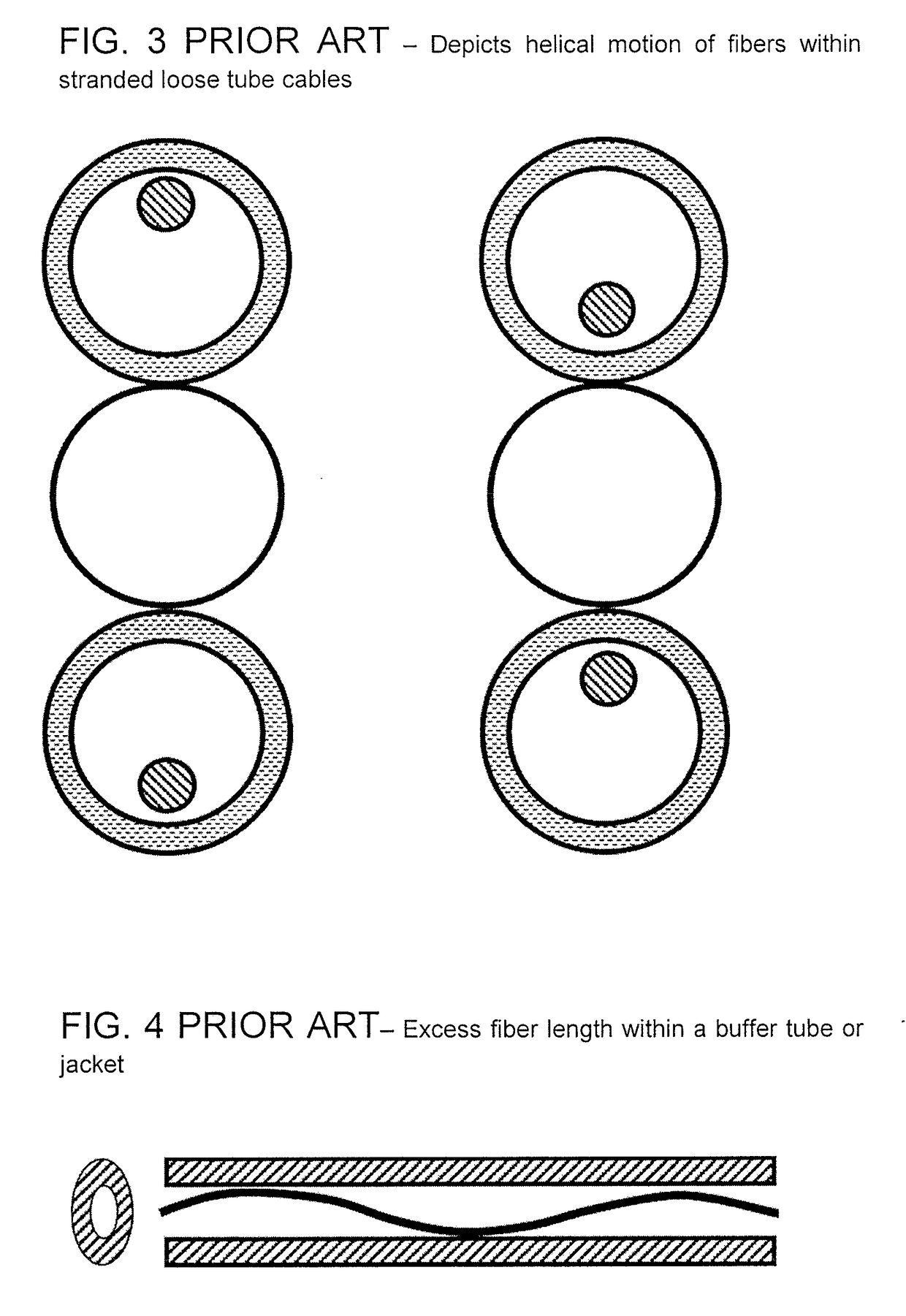Small form factor flame resistant low smoke halogen free fiber optic cable
a fiber optic cable, flame-resistant technology, applied in the direction of bundled fibre light guides, instruments, fibre mechanical structures, etc., can solve the problems of reducing the rated tension, and increasing the optical loss along the length of the optical fiber, so as to avoid high optical attenuation and optical loss, the effect of minimizing the shrinkage of the exterior jack
- Summary
- Abstract
- Description
- Claims
- Application Information
AI Technical Summary
Benefits of technology
Problems solved by technology
Method used
Image
Examples
first embodiment
[0070]Turning now to FIG. 11, a detail description concerning the various components of a first embodiment or subassembly will now be discussed. As can be seen in this embodiment, the fiber optic cable 2 generally comprises an exterior first jacket 4 which surrounds and encases a variety of different internal components, each of which will be discussed below in further detail. The first jacket 4 is typically manufactured from a plastic material, such as blended polyolefins that contain flame retardant material which result in a relatively high limiting oxygen index, e.g., a LOI of at least 40 (preferably 50), that renders the exterior first jacket 4 resistant to being ignited when exposed to heat or an open flame. A suitable blended polyolefins material, for use in manufacture of the first jacket 4 (single assembly cable), is a proprietary formulation sold by Teknor Apex of 505 Central Avenue, Pawtucket, R.I. 02861 under the Halguard 58350 trade name. Another desired characteristic ...
second embodiment
[0087]Turning now to FIG. 13, a detailed description concerning the disclosure will now be provided. As this embodiment is similar to the previous embodiment in many respects, identical elements will be given identical reference numerals.
[0088]According to this embodiment, first and second subassemblies 14, 16, each of which is generally formed as described above with respect to the description relating to FIG. 11, are first assembled generally independently of one another. As shown, the first subassembly 14 includes a first jacket 4 that surrounds and encases 12 optical fibers 6 while the second subassembly 16 also includes a first jacket 4 that surrounds and encases an additional 12 optical fibers 6. The first jacket 4, of each one of the first and the second subassemblies 14, 16, also surrounds and encases a plurality of reinforcing strands 8 which are arranged so as to separate and space apart each one of the individual optical fibers 6 from any adjacent optical fiber(s) 6 conta...
third embodiment
[0095]Turning now to FIG. 14, a detailed description concerning the disclosure will now be provided. As this embodiment is similar to the previous embodiments in many respects, identical elements will be given identical reference numerals.
[0096]According to this embodiment, first, second, third and fourth subassemblies 14, 16, 18, 26 each of which is generally formed as described above with respect to FIG. 11, are first assembled generally independently of one another. As shown, the first subassembly 14 includes a first jacket 4 that surrounds and encases 12 optical fibers 6, the second sub 16 unit includes a first jacket 4 that surrounds and encases 12 optical fibers 6, the third subassembly 18 includes a first jacket 4 that surrounds and encases 12 optical fibers 6 while the fourth subassembly 26 also includes a first jacket 4 that surrounds and encases an additional 12 optical fibers 6. The first jacket 4, of each one of the first, the second, the third and the fourth subassembli...
PUM
 Login to View More
Login to View More Abstract
Description
Claims
Application Information
 Login to View More
Login to View More - R&D
- Intellectual Property
- Life Sciences
- Materials
- Tech Scout
- Unparalleled Data Quality
- Higher Quality Content
- 60% Fewer Hallucinations
Browse by: Latest US Patents, China's latest patents, Technical Efficacy Thesaurus, Application Domain, Technology Topic, Popular Technical Reports.
© 2025 PatSnap. All rights reserved.Legal|Privacy policy|Modern Slavery Act Transparency Statement|Sitemap|About US| Contact US: help@patsnap.com



